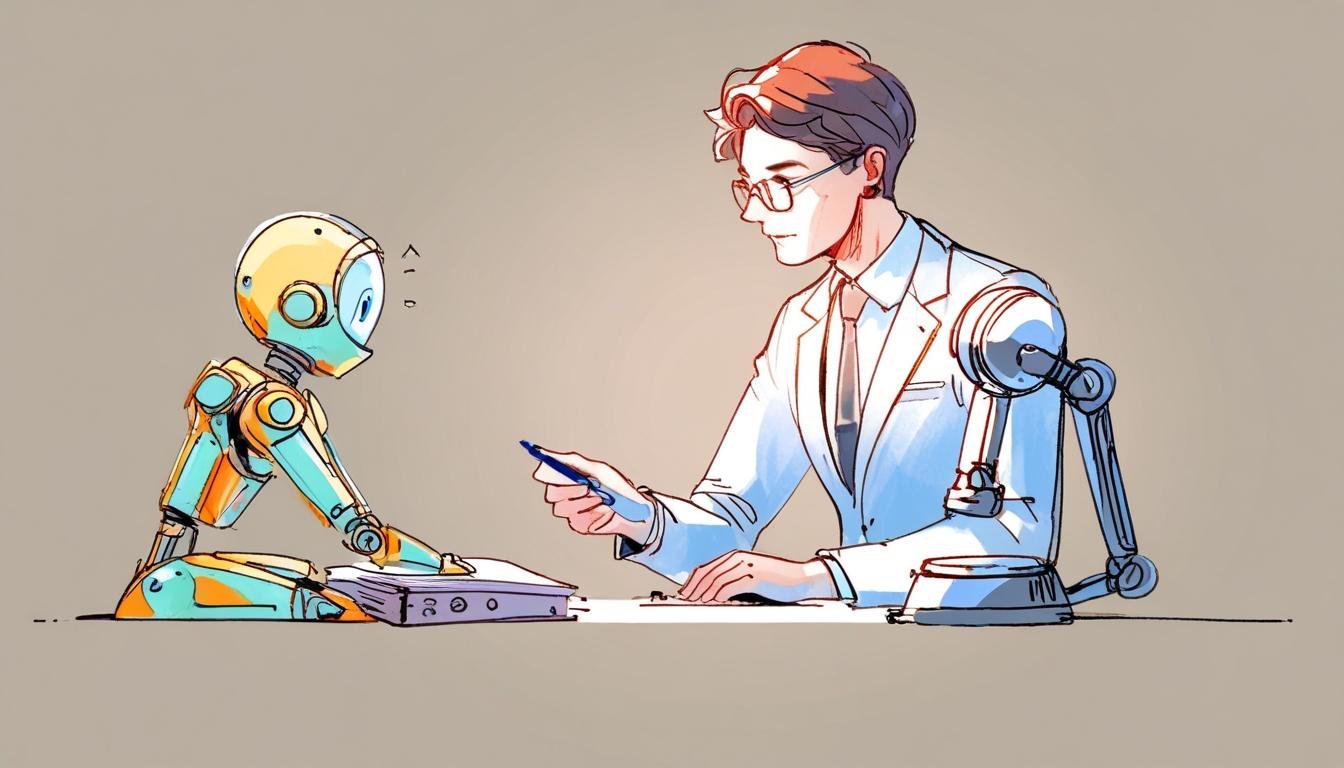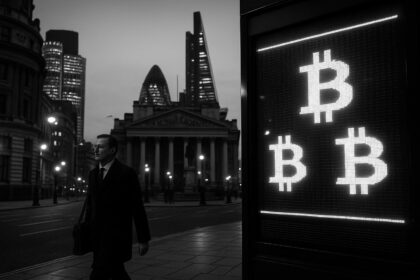As Slaughter and May halts salary increases for junior lawyers to invest in AI tools, the legal industry faces profound shifts. While AI enhances efficiency and accessibility, concerns grow over the future roles, ethics, and employment prospects of early-career lawyers in an AI-driven sector.
The integration of artificial intelligence (AI) into the legal profession is advancing at a pace that raises both optimism and concern, particularly among junior lawyers. A recent decision by Slaughter and May to freeze salaries for these early-career professionals at £150,000 while channeling resources into AI tools poignantly highlights tensions within the industry. In an age where machines are increasingly tasked with handling routine legal functions, the future for junior lawyers appears uncertain.
AI has long been a part of the legal landscape, evolving from basic tools like dictaphones in the 1950s to sophisticated systems that can perform tasks traditionally reserved for human lawyers. Today, technologies are streamlining document reviews, conducting due diligence, drafting basic legal documents, and even predicting litigation outcomes based on historical data. For instance, services like Lex Machina are leveraging big data to assess court behaviours, informing strategies for legal practitioners.
The advance of AI is not without its benefits. Innovations such as those from Garfield AI, an AI-based law firm approved by the Solicitors Regulation Authority, are aimed at making legal services more accessible, providing services like debt collection letters for as little as £2. This capability underlines a growing trend where AI seeks to reduce costs and alleviate burdens on the overstrained court system, garnering support from legal figures including Lord Justice Colin Birss.
However, critics warn of the implications these developments have for junior lawyers whose roles might be diminished as firms increasingly rely on AI. The financial rationale is compelling, as the typical hourly billing rates for junior lawyers at top firms hover around £600-£700, meaning that their contributions are critical to the profitability of these firms. With the anointment of AI tools to handle basic tasks, the justification for maintaining a large cohort of junior lawyers might be called into question, leading to profound shifts in billing structures and employment models.
Moreover, the concept of AI in the courtroom raises important ethical questions that need addressing. As the technology automates more functions, the role of human oversight becomes increasingly essential, particularly in complex legal scenarios where nuanced understanding and strategy are paramount. Future legal frameworks will need to grapple with myriad issues, including ethics, privacy, and the proper use of AI, ensuring robust protections and guidelines are established to govern its use.
Interestingly, while AI is sometimes depicted as a replacement for human labour, experts suggest that it can also be a valuable tool for enhancing the capabilities of lawyers. To remain relevant in an AI-driven landscape, new law graduates will need to cultivate AI literacy alongside their traditional legal training. As firms adopt AI tools and streamline operations, the emphasis will inevitably shift towards those who can skilfully navigate the confluence of law and technology.
Yet, the pendulum may swing back, emphasising the irreplaceable role of human judgment in legal matters. For instance, the application of AI in recent cases has not been without controversy. A high-profile case involving Prakazrel ‘Pras’ Michel illustrated potential pitfalls, where the use of AI by his former counsel led to significant missteps that called into question the reliability of technology in high-stakes litigation.
As law firms explore their options in the face of these rapid advancements, some are developing proprietary AI tools tailored to their specific needs. This can offer a competitive advantage, especially for larger firms with the resources to innovate in-house, while smaller firms may find opportunities to level the playing field by deploying AI in standardised tasks.
Overall, while the trend towards an AI-augmented legal profession seems unstoppable, there remains a clear case for the continued necessity of junior lawyers and their human expertise. The law will always require a nuanced understanding and moral grounding that technology cannot replicate. In navigating this transformation, the legal field must strike a delicate balance, integrating advanced technologies while preserving the foundational human elements essential to justice.
Reference Map
- Paragraphs 1, 2, 4, 5, 7
- Paragraphs 3, 4, 6
Source: Noah Wire Services
- https://www.ft.com/content/921dde82-a503-4f44-ae1b-51c657c811ea – Please view link – unable to able to access data
- https://www.ft.com/content/921dde82-a503-4f44-ae1b-51c657c811ea – This article discusses the integration of artificial intelligence (AI) into the legal profession, highlighting concerns about junior lawyers’ roles and compensation. It notes that firms like Slaughter and May are freezing junior lawyer salaries at £150,000 while investing in AI tools. The piece outlines how AI is used for tasks such as document review, due diligence, drafting simple legal documents, and predicting litigation outcomes. Despite AI’s growing presence, the article emphasizes the continued importance of human lawyers for tasks requiring oversight, succession planning, and addressing complex legal challenges.
- https://www.ft.com/content/e56cb23e-bc10-4235-997c-186df5bd963c – Garfield AI, an AI-based law firm, has received approval from the Solicitors Regulation Authority, marking a significant development in the legal industry. Co-founded by Philip Young and Daniel Long, Garfield AI offers services like £2 debt collection letters and £50 legal claim forms, aiming to assist individuals and small businesses in recovering unpaid debts. The firm has garnered support from judicial figures, including Lord Justice Colin Birss, for its potential to enhance access to justice and reduce court backlogs, reflecting a broader trend of AI integration in legal services.
- https://www.reuters.com/legal/legalindustry/ai-new-legal-powerhouse-why-lawyers-should-befriend-machine-stay-ahead-2024-10-24/ – This article explores the rapid adoption of AI in the legal industry, emphasizing the need for lawyers to embrace technology to remain competitive. It discusses how AI can automate repetitive tasks, potentially leading to shifts in billing structures and reducing the need for junior associates. The piece also highlights the importance of AI literacy for new graduates and notes that while larger firms may have an advantage in complex AI applications, smaller firms can leverage AI to compete in standard tasks. Ethical and regulatory frameworks are deemed essential for AI’s integration in legal practice.
- https://www.ft.com/content/afb750bf-ab26-42fd-a802-b788145b8449 – US law firms are increasingly adopting generative AI tools to enhance efficiency and automate tasks, focusing on job preservation and safety. Firms like Crowell & Moring and White & Case utilize AI for non-confidential tasks, document summarization, and core legal work with client consent. This technology significantly reduces time spent on routine tasks, allowing firms to offer cost-effective services. Challenges such as technological literacy and client reservations about data privacy persist, but firms address these concerns through training programs and secure AI tool deployment, anticipating further efficiency improvements in the near future.
- https://apnews.com/article/d2c93aa5404eba63c3347a05fe8ba091 – Prakazrel ‘Pras’ Michel, a member of the Fugees, is seeking a new trial following his conviction on multiple charges. His new legal team argues that his previous attorney’s use of a generative AI program for closing arguments was among several errors that compromised the defense. The AI tool, developed by EyeLevel.AI, was intended to assist rather than replace human lawyers by providing rapid answers to complex legal questions. However, in court, Michel’s former lawyer made significant mistakes, including misquoting song lyrics attributed to the Fugees, raising questions about the accuracy and appropriateness of AI in legal proceedings.
- https://www.ft.com/content/376b1be0-f4d2-4a14-ab9a-cc90471cb2ed – Large language models (LLMs) are transforming the legal industry by enabling firms to analyze vast amounts of data and generate human-like language. Some law firms, such as Irell & Manella, are developing their own AI-powered tools in-house rather than relying on third-party providers. Firms like McDermott Will & Emery use third-party AI but customize it with their own data to gain a competitive edge in areas such as healthcare private equity deals. As firms become more adept at using AI, the role of traditional legal tech providers may be challenged, suggesting a need for these providers to adapt or pivot their business models.
Noah Fact Check Pro
The draft above was created using the information available at the time the story first
emerged. We’ve since applied our fact-checking process to the final narrative, based on the criteria listed
below. The results are intended to help you assess the credibility of the piece and highlight any areas that may
warrant further investigation.
Freshness check
Score:
8
Notes:
The narrative references recent trends and developments in AI integration within the legal profession, such as the use of AI tools by law firms and the ethical questions these raise. However, it does not refer to any specific recent events or changes that might be outdated, though it does discuss ongoing industry shifts.
Quotes check
Score:
6
Notes:
No direct quotes are provided in the narrative, which limits the ability to verify their original source and date. This means the narrative likely relies on paraphrased or summarized information.
Source reliability
Score:
9
Notes:
The narrative originates from the Financial Times, a well-known and reputable publication recognized for its factual accuracy and unbiased reporting.
Plausability check
Score:
9
Notes:
The claims about AI integration in the legal profession are plausible and supported by current trends and concerns within the industry. The narrative raises valid points about the benefits and challenges of AI adoption.
Overall assessment
Verdict (FAIL, OPEN, PASS): PASS
Confidence (LOW, MEDIUM, HIGH): HIGH
Summary:
The narrative is well-supported by current trends in AI integration within the legal profession, is sourced from a reliable publication, and raises plausible concerns about the future of junior lawyers. While there are no direct quotes to verify, the overall context and reliability of the source contribute to a high confidence rating.













